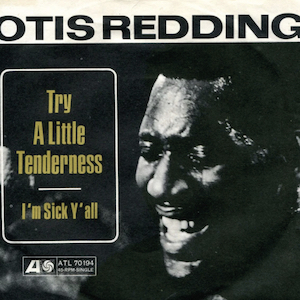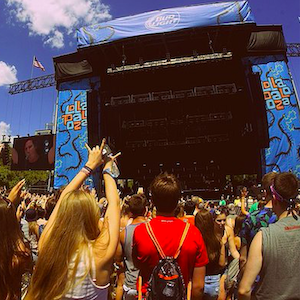Scratch That!
By Sally Blodgett
Like many a trend these days, things come back into fashion that seemed once lost. For example, vinyl records have made a massive comeback. You can find almost any album, new or old, on vinyl again. Records are spun, literally, on turntables to play music, but the musical style of hip-hop utilises the idea of ‘spin’ differently. The world of hip-hop is a tapestry woven with multi-faceted musical, cultural, and art forms, coming together as one. Read more about the exciting world of hip-hop here in Scratch That!

We’ve all heard the phrase ‘spinning a record’, meaning literally to play a song going around and around on a turntable. However, the history behind hip-hop music is interesting and complex and offers a new perspective on this genre that is so popular today. Because ‘spinning a tune’ means a whole lot more in this genre.
In the early 1970s, people began taking the records they loved and spinning them on turntables for their friends, family, or anyone that would listen, often in houses or outside parties. Eventually, pioneers like DJ Kool Herc and DJ Grand Wizzard Theodore began experimenting with the way records spun on turntables. From these events onwards the idea of working with two turntables at one time became the norm.
DJ Kool Herc introduced the “breakbeat” DJ technique, a mixing practice he adapted from Jamaican dub music. He would mix together different genres of music with percussive sections, like funk and soul, creating completely new sounds. Using a pair of turntables, Herc would play two copies of the same record and then switch between them to extend the percussive section, known as the break. Kool Herc named this breakbeat juggling style of DJing “The Merry-Go-Round.” This breakbeat turntablism quickly became influential in the rise of hip hop music, rapping, and breakdancing.
When a DJ spins a record, and then turns it back on itself the other way, and then spins it back, and then spins it the other way again, they are utilising a musical technique called scratching, which ultimately makes longer breaks between the beats in songs. That’s the ‘scratch’ you hear when you listen to a class, old-school hip-hop song. This was usually done live by DJ’s on the night.

As the DJ is spinning the record and creating a new beat, an MC (master of ceremonies) raps over the music and offers spoken word rhymes and rhythms.
Rapping and scratching, along with a few other musical techniques, are the building blocks of hip-hop music. As hip-hop music evolved, artists brought in other music genres and spread their influence beyond the mainly urban African American communities where it first started.
Rapping evolved from the Jamaican music technique called toasting and grew from MCs keeping the audience entertained between a DJ’s songs, (before the double turntable when DJ’s could ‘mix’ one track straight into the next) to rapping with the beat on top of a DJ’s songs, to sometimes political and social commentary set to music that let the voices of primarily young African Americans be heard.

By the 1980s, hip-hop began to become popular in the mainstream and in the rest of the world. The song “Rapper’s Delight” by the Sugarhill Gang, which was released in 1979, was one of the first rap songs to be released and was the first hip-hop song to hit Top 40 in the United States and many other places in the world, and was revolutionary. It is credited with helping hip-hop and rap to reach wider audiences; henceforth hip-hop became popular across the globe.
During the same time that hip-hop music was becoming popular, breakdancing and graffiti were also entering the mainstream. Breakdancing became a staple of the nightclub scene along with DJs and rappers. Graffiti as an art form, made its shift from the streets to galleries with the opening of the Fun Gallery by Patti Astor in 1981. As all came from urban street life it melted together as all facets of a movement.

The influential sample-based collages, “Lessons” by DJ duo Doug ‘Double Dee’ DiFranco and Steven ‘Steinski’ Stein that came out in 1981 were representative of what the hip-hop movement was. They took well-known songs, sound bites from films, and music from the disco and funk genres, and mixed them together to create new music, along with a few other key makers, that was unlike anything anyone had heard before. This used a popular technique called ‘sampling’, which took preexisting music and used it to create something new.
Other influential DJs of the time are Afrika Bambaataa, also known as “The Godfather”, and Grandmaster Flash. Kurtis Blow was also an important artist during the rise of hip-hop – he was the first hip-hop artist to be signed to a major record label, Mercury Records, in 1979.
Grandmaster Flash was of the hip-hop group “Grandmaster Flash and the Furious Five”, who made the hip-hop record “The Message” which was a very popular song that had immense mainstream success and provided social commentary on the poverty and stress that inner-city kids faced.
As hip-hop grew in popularity, record labels dedicated to the production of hip-hop music began to pop up. Independent labels like Tommy Boy, Prism Records, and Def Jam were successful in releasing records at a fast pace to fill the demand for hip-hop music from local radio stations and club DJs.
Scratching, sampling, and rapping are the building blocks of hip-hop music that, when put together, created an experience of sound that was completely new and unheard of before. However, since hip-hop grew from the ground up in the streets of urban America, there is very little documentation of the beginning of the movement.
As hip-hop grew into the mainstream, people began to take note of this exciting new counterculture and document it in the form of photographs. Tunisian-born photographer Sophie Bramly moved to New York City in 1981 and photographed the major players of the era: the deejays, the emcees, the breakdancers, and the graffiti artists.
Bramly’s new book, ‘Yo! The Early Days of Hip-Hop: 1973-1984’, is a collection of photographs that she took in New York City between 1982 and 1984 and in France after hip-hop began to gain popularity in Europe starting in 1984. She captures the excitement and energy that the hip-hop culture created and documents the ways that different artists came together to grow the movement.

‘Yo!’ is a deep dive into the early years of hip-hop. You can find candids of graffiti artists hanging out at nightclubs with breakdancers, portraits of the hip-hop trailblazers, and landscapes of 1980s New York City. Bramly’s photos capture the intimate web woven between the artists forging their own path with the hip-hop movement.
‘Yo! The Early Days of Hip-Hop: 1973-1984’ is available for purchase at Artbook.com.
If you enjoyed reading about the world of hip-hop, read more from this month’s theme, spun, in Eight in the Middle.
.Cent magazine London Be Inspired; Get Involved





